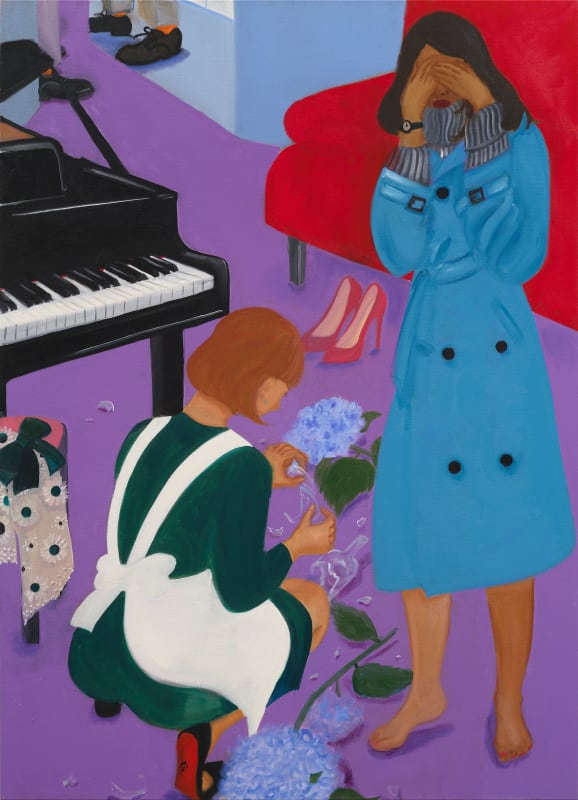Girls being girls: Maria Farrar
Ota Fine Arts is pleased to present Girls being girls, a solo exhibition by artist, Maria Farrar. This is her second solo presentation in Shanghai and will feature 12 new paintings. Born to a Filipina mother and an English father, Farrar lived in Japan from the age of 2 to 15 and now lives and works in London.
Farrar captures the life of women by excavating images of parallel cultures and events from her adolescence through today. With her use of vivid colours, she depicts motifs from daily life and memorable scenes, and animal or pastry forms that interest her. In her last exhibition Overseas, using a rainbow popsicle palette, she told a story of women living in foreign countries, their loneliness and strength that could be seen in the Filipina women's community.
The exhibition title, "Girls being girls" is a turn from the original phrase 'girls will be girls' that contains a certain resignation or acceptance of gender-specific behavior. By changing it to the present participle tense, Farrar brings the word back to the moment before any judgment on gender is made.
“I looked at girlhood as a metaphysical concept, not one defined only by age or appearance. The word ‘girl’ in ‘stop being a girl’, ‘girls will be girls’, ‘big girls don’t cry’ is an idea, and I tried to give it some sort of physical shape. And I asked whilst painting, when does girlhood begin, and when does it end? And does it ever end?”
In her new paintings, prevalent and recurrent motifs in the artist’s work such as high heels and make-up tools are interwoven with a variety of thematic images. The obsession with the contents of a smartphone, the gesture of involuntary tears at broken glass, create scenes that question this idea of "girlhood". Key colours of black, white and red echo throughout the exhibition, and were consciously selected to create a striking and an apparent contrast in each painting.
Farrar emphasizes the importance of the contrast in the painting that shares the same title as the exhibition. “The reason this painting is key to the show is because it represents contrasts: in terms of colour and form, bright is counteracted by dark, and sharp angles are contrasted with soft fuzzy. In terms of story, where there is a protagonist there is an antagonist. There is a sense of ‘us’ and ‘them’. I contrasted love with exclusion, envy with sisterhood; greed with sharing; and innocence with a sense of foreboding.”
Through her deliberate choice of colours and depiction of scenes, Farrar articulates her thoughts about girlhood in the self and finds it a constant in her work - something that can emerge and disappear at any moment, regardless of when or who it is, and questions the viewers whether she is alone in this, or maybe there is that sense in everyone?




